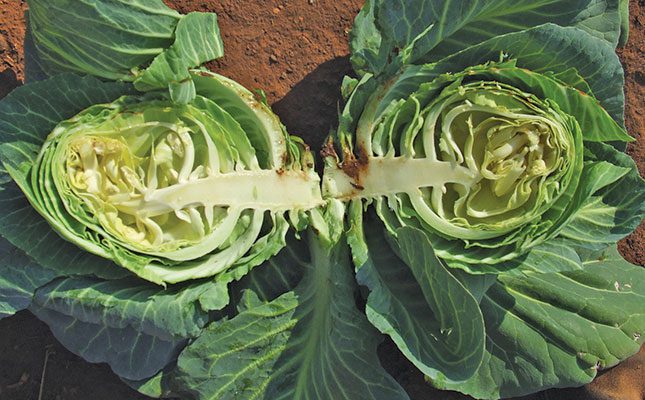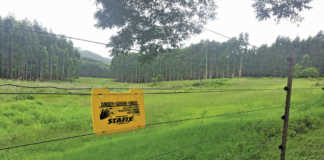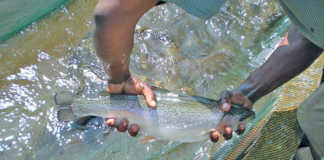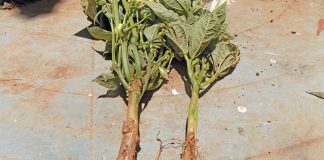
Photo: Bill Kerr
Oedema is a condition that, if the farmer does not know about it, will cause instant panic. Usually the whole land will develop this disorder almost overnight and the farmer may fear that he is about to lose his whole crop from a mysterious disease.
Oedema (US spelling, edema) is caused by a sudden drop in air temperature, when the soil is saturated and warm and the sap pressure in the plant causes ruptures in cells on the lower epidermis of the leaves.
READ Be aware of cauliflower’s special requirements
It is also more likely to develop when the air humidity is high and transpiration is reduced, with water being pushed up into the leaves faster than transpiration can get rid of it.
The top of the leaf shows light speckles and when the leaf is turned over, one will see a mass of small pustules. The disease is harmless and will not have a detrimental effect on the yield or the head quality.
When cabbages burst
Bursting cabbages can be caused by various conditions. The natural cycle of a cabbage is based on the reproductive stage manifesting when the plant goes through the cold of winter and then starts warming up in spring.
In anticipation of this event, when approaching the season when flowering is to take place, the core in the head starts to push upwards, the leaves within the head become loose, and the cabbage bursts, enabling the growing tip to easily burst through to make the flowers.
During this process, the head changes shape, becoming more pointed. Flat varieties become rounded and round varieties become more conical. Varieties bred for overwintering and spring harvesting tend to be flat or semi-flat. These varieties need to be both cold tolerant as well as bolting tolerant.
READ Achieving success with broccoli
The number of varieties that are suitable is limited. Some years ago, with the shortage of suitable varieties with these qualifications, a variety was used that was flat, had an early maturity and was round at harvest after winter.
However, there were risks and sometimes they did not make it and started bolting. Suitable new varieties have now completely replaced it. Tip burn was discussed under mineral deficiencies, where a lack of calcium causes leaves to shed within the head, leaving dead leaves among healthy leaves in the head.
Cold damage can manifest in various ways. In young plants, a severe frost may cause the leaves to become distorted and spongy. When these leaves are turned over, one will find that the lower epidermis has separated from the tissue within the leaf.
On occasions, during a severe frost, the whole plant may turn white. The stems may also burst and become spongy. This is particularly the case with young cauliflower plants. Plants that are heading may have the head cover leaves burn without damage to the outer leaves.
These burnt leaves usually develop soft rot. One may think that with an approaching severe cold front, damage is inevitable but that is not the case. If the plants are dry and in dire need of irrigation, they are more prone to frost damage.
There should be sufficient soil moisture but the soil surface should not be wet. The leaves should not be wet either, as a cold front wind will cause the leaves and the area to be cooled even more by evaporation.
Bill Kerr is a vegetable specialist and breeder.










